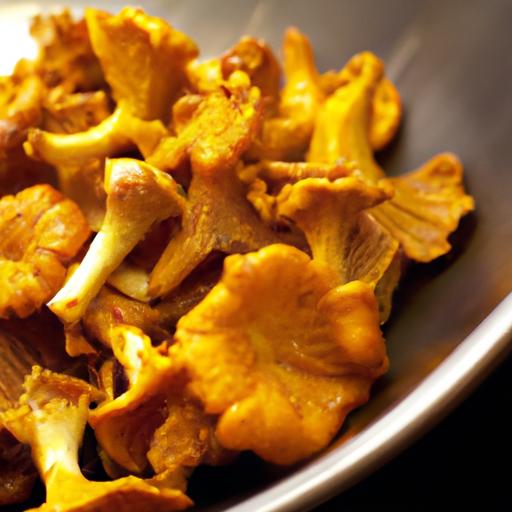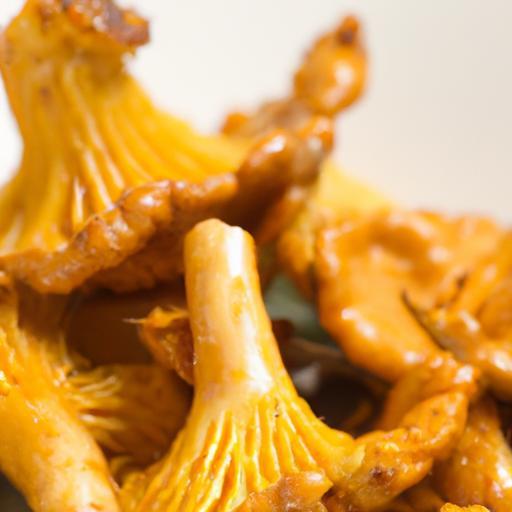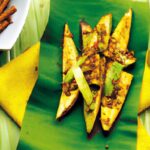In the mysterious world of mushrooms, chanterelles have long been celebrated for their delicate, golden beauty and signature forked ridges. But what happens when these familiar fungi start growing what seem like “true gills,” those thin, blade-like structures usually reserved for other mushroom species? Is this a cause for alarm, a quirky genetic twist, or simply nature’s way of keeping us on our toes? In this article, we peel back the layers of fungal biology to explore the surprising phenomenon of chanterelles sporting true gills-and what it really means for foragers, cooks, and mushroom lovers everywhere.
When Chanterelles Grow True Gills: Should You Worry?
When chanterelles grow true gills, many foragers and cooks pause in curiosity and caution. This striking feature, often misunderstood, sets chanterelles apart in the mushroom kingdom and carries important implications for both identification and edibility. As a culinary enthusiast and seasoned mushroom forager, I’ve witnessed how recognizing the subtle difference between true and false gills not only ensures safe consumption but also enhances appreciation for these golden treasures.
Prep and Cook Time
- Preparation: 15 minutes
- Cooking: 10 minutes
- Total Time: 25 minutes
Yield
Serves 4 as a delicious appetizer or side dish
Difficulty Level
Medium – Requires basic mushroom foraging knowledge and cooking skills
Ingredients
- 2 cups fresh chanterelles, cleaned and trimmed
- 2 tablespoons unsalted butter
- 1 tablespoon olive oil
- 2 cloves garlic, finely minced
- 1 small shallot, finely diced
- Salt and freshly ground black pepper, to taste
- 1 teaspoon fresh thyme leaves
- 1 tablespoon fresh parsley, chopped for garnish
- 1 teaspoon lemon zest (optional, for brightening flavor)
Instructions
- Identify your chanterelles carefully. Look closely to confirm the presence of false gills-these appear as forked ridges running down the stem rather than separate blade-like structures. If you spot well-defined, unbranched true gills, double-check your find with a trusted mushroom guide or expert to avoid confusing with toxic look-alikes.
- Clean the chanterelles gently. Use a soft brush or damp cloth to remove dirt without saturating the mushrooms. Avoid washing under running water as chanterelles absorb moisture.
- Heat the butter and olive oil in a skillet over medium heat until the butter is melted and begins to foam, about 1-2 minutes.
- Add the minced garlic and diced shallot. Sauté for 2 minutes until aromatic, stirring often to prevent browning.
- Introduce the chanterelles to the pan. Sauté until golden brown and tender, approximately 5-7 minutes. Stir gently and often to encourage even cooking without breaking delicate mushroom caps.
- Season with salt, black pepper, and fresh thyme leaves. Toss to combine flavors thoroughly.
- Finish with a sprinkle of lemon zest for a hint of brightness if desired. Remove from heat.
- Plate the sautéed chanterelles and garnish with freshly chopped parsley for a vibrant, earthy presentation.
Chef’s Notes
- Substitutions: Use shiitake or oyster mushrooms if chanterelles aren’t available, but remember these have true gills distinct from chanterelle ridges.
- Why false gills matter: False gills are a key identification marker that guarantee you’re enjoying safe, edible chanterelles rather than potentially harmful true-gilled lookalikes.
- Foraging caution: Always cross-reference your findings with multiple reliable sources like the MushroomExpert.com guide to boost confidence.
- Make-ahead: Prepare the chanterelles a few hours before serving; reheat gently to preserve texture and flavor.
Serving Suggestions
These sautéed chanterelles make an exquisite topping for toasted sourdough bread drizzled with extra virgin olive oil. Pair alongside creamy polenta or use as a flavorful addition to risottos and pastas. Garnishing with microgreens or a light sprinkle of grated Parmesan elevates the dish into a refined yet naturally rustic delight.
| Nutrient | Per Serving |
|---|---|
| Calories | 90 |
| Protein | 2g |
| Carbohydrates | 5g |
| Fat | 7g |

Q&A
Q&A: When Chanterelles Grow True Gills – Should You Worry?
Q1: What are chanterelles, and what makes them special?
A1: Chanterelles are golden-hued mushrooms beloved by foragers and chefs alike for their fruity aroma and delicate flavor. Traditionally, they’re recognized by their wavy, forked ridges beneath the cap-often called “false gills.” These ridges run down the stem and are blunt-edged, setting chanterelles apart from many other mushrooms.
Q2: What does it mean when chanterelles grow “true gills”?
A2: True gills are the familiar thin, blade-like structures found under the caps of many mushroom species, such as agarics. Unlike chanterelles’ false gills, true gills are knife-thin and separate from one another. Occasionally, some chanterelle varieties or certain environmental factors may cause the false gills to appear more defined and gill-like, which can confuse or concern foragers.
Q3: Is it normal for chanterelles to have true gills?
A3: While classic chanterelles almost always feature ridges rather than true gills, some rare species or hybrids can exhibit more gill-like structures. Additionally, environmental stressors or mutations may cause chanterelles to present atypical morphology. This is uncommon but not unheard of, so seeing “true gills” on a chanterelle isn’t necessarily a disaster.
Q4: Should you worry if you find a chanterelle with true gills?
A4: Don’t panic-but don’t ignore your mushroom knowledge either. True chanterelles have distinct characteristics beyond their gill structure, such as thick flesh, a fruity scent, and forked ridges running down the stem. Mushrooms with real gills are often different species-sometimes toxic-so double-check before harvesting. When in doubt, consult a trusted field guide or expert.
Q5: How can you confidently identify chanterelles despite gill variations?
A5: Focus on a combination of traits: chanterelles typically have blunt, forked ridges that are decurrent (running down the stem), a fruity apricot-like aroma, and a firm, meaty texture. They grow in clusters near hardwood trees, especially oaks and pines. If your mushroom has distinct, sharp-edged gills, or an unpleasant odor, consider that it might be a lookalike, such as a false chanterelle or a jack-o’-lantern mushroom.
Q6: Can chanterelles be toxic or dangerous?
A6: True chanterelles are edible and prized delicacies. However, mushrooms with true gills in their place might be different, potentially toxic species that resemble chanterelles. Consuming misidentified mushrooms can be dangerous, so extreme caution is warranted if morphology doesn’t match classic chanterelle features.
Q7: What should mushroom hunters do if they encounter odd chanterelles?
A7: Take detailed photos, note the growing environment, and if possible, collect samples for expert identification. Avoid eating any mushroom that deviates from expected characteristics until properly identified. When foraging, always better safe than sorry.
Wrap-Up:
Chanterelles are famed for their hallmark ridges, but their occasional flirtation with “true gills” can puzzle even seasoned foragers. While this phenomenon is unusual, it isn’t an automatic red flag-just a reminder that nature loves variety and that a sharp eye and good knowledge are your best allies in the wild mushroom kingdom.
To Wrap It Up
As we’ve uncovered, the curious case of chanterelles sporting true gills is more a fascinating quirk than a cause for alarm. Nature, in its endless variety, occasionally blurs the lines we draw between mushrooms, reminding us that the fungal world is as complex as it is captivating. So next time you stumble upon a chanterelle with gills that look a little more pronounced, take a moment to appreciate this botanical oddity-no need to worry, just a new chapter in the story of these golden forest gems. Happy foraging, and may your mushroom adventures always be full of wonder and safe discoveries!


